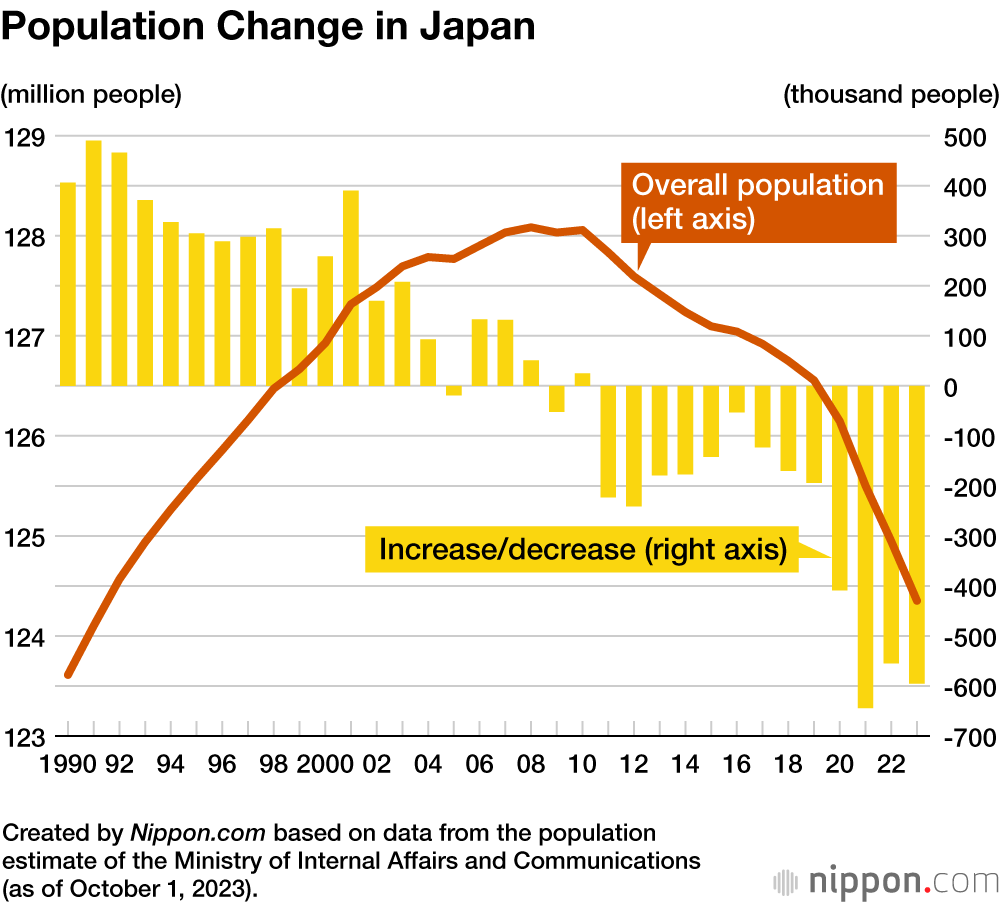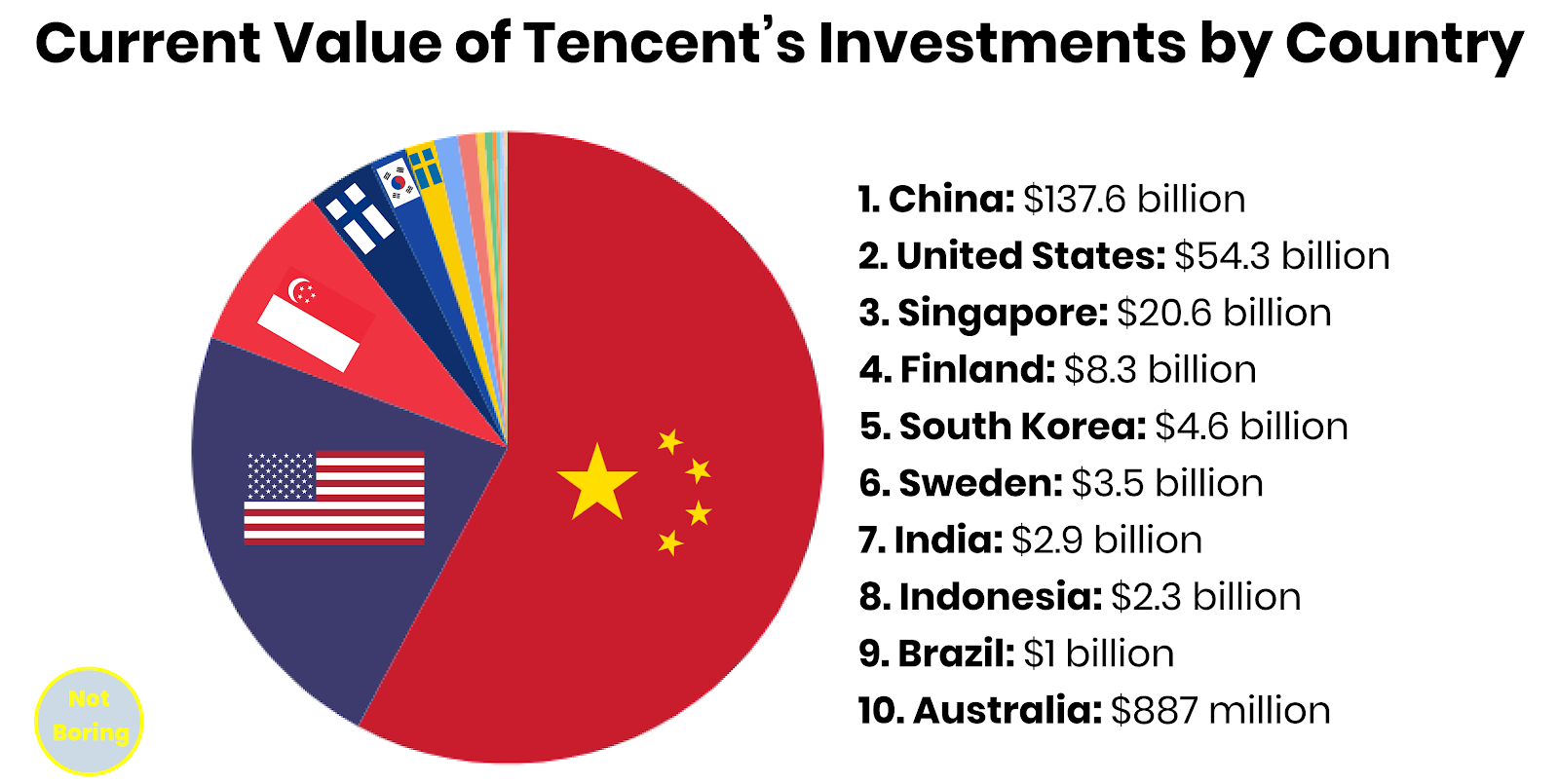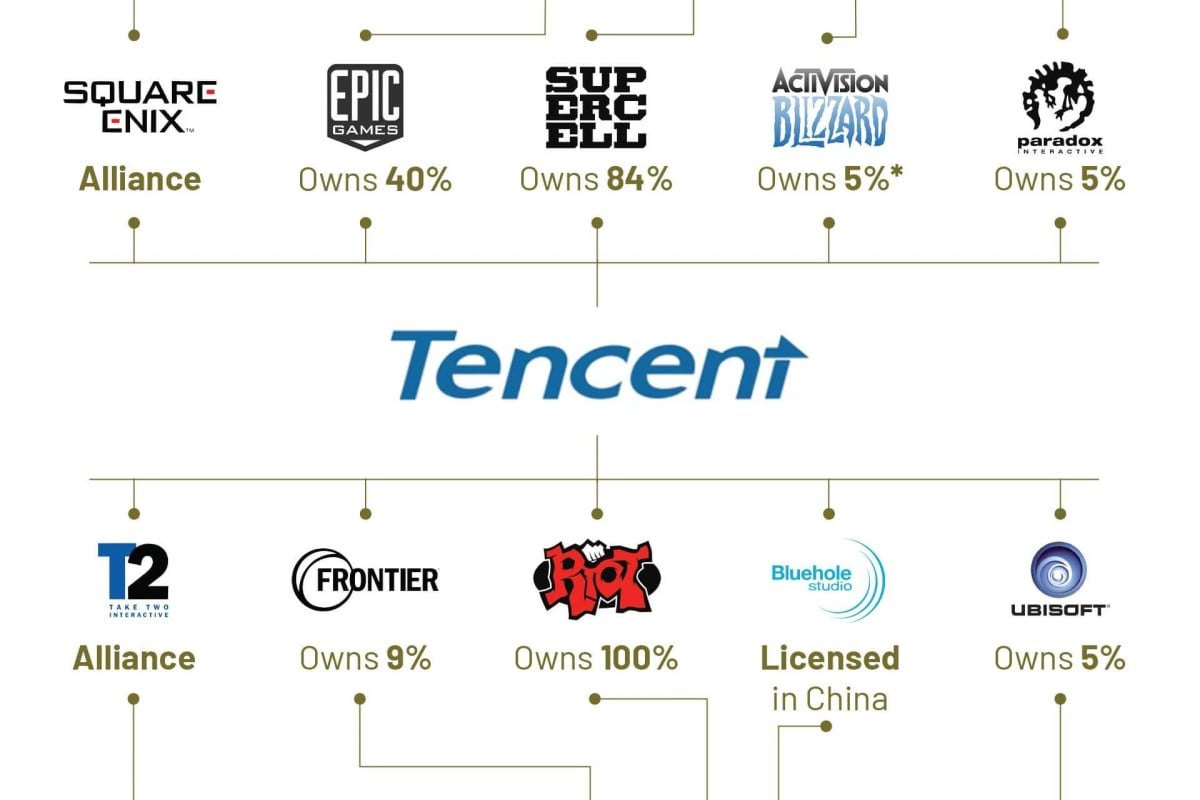For decades, Japan’s cultural exports—bolstered by the “Cool Japan” initiative and its post-war industrial revolution—have dominated global perceptions of East Asian soft power. However, as Japan’s cultural monopoly seems to loosen, this era may be drawing to a close. Compounding the issue is Japan’s intense demographic crisis: a low birthrate, aging population, and a divided social structure inherited from post-war Western influences have placed immense strain on its cultural industries. We will focus today on the rise of China and its strategy to claim this newly vacant space in the global entertainment market.
 Source: Nippon.com
Source: Nippon.com
In stark contrast with Japan, South Korea has emerged as a beacon of stability and innovation. The backbone of its economic resilience lies in the chaebols, family-controlled conglomerates that wield immense influence over the nation’s financial landscape. In 2023 alone, the 30 largest chaebols accounted for 76.9% of South Korea’s GDP—a figure that continues to rise. These corporate giants have not only stabilized the economy but also fueled the explosive growth of the Korean entertainment industry.

Source: South Korean Ministry of Culture
The Korean Wave, encompassing K-Dramas, Korean cinema, and K-Pop, has become a global phenomenon. Born out of necessity following the 1997 Asian Financial Crisis, it represents a strategic pivot toward cultural exports as a source of revenue. Coined by Chinese journalists to describe the newfound popularity of Korean media in Mainland China (韓流, hánliú), the term now symbolizes South Korea’s dominance in shaping contemporary pop culture.
While the decline of Cool Japan and the rise of the Korean Wave may seem inevitable, one cannot overlook the growing influence of another major player: China.
Tencent: The Galloping Horse
No discussion of East Asia’s cultural landscape would be complete without mentioning Tencent, often referred to as the “Galloping Horse” of China. With its vast reach across multiple industries, Tencent has positioned itself as a dominant force in the global entertainment market, with many international investments.
Whether it’s in the Music Industry, where Tencent has a strong presence and joint ventures with most of the East Asian industry’s companies, most notably Sony with Liquid State and TME. Video and Streaming, with WeTV and Funimation producing Ready Player One, or the new Terminator. And most importantly the Gaming Industry, with PUBG Mobile, League of Legends, Valorant, Clash of Clans, Kerbal Space Program and more.
 Source: Not Boring
Source: Not Boring
Like in all industries, the interest of companies lie in taking the spot wherever vacuums lie. The gaming industry in the west has been seriously hurt by post-pandemic costs never being recovered, massive layoffs have affected even the most stable publishers. Critical reception of recent AAA games have also been less than ideal, and most investors see GaaS as the most stable route.
Black Myth Wukong’s current reception and it being a great single-player game put it right on the spot for Game Of The Year, this is the first time a Chinese game could pretend to be on the podium thus, and its immediate success as the game with the most concurrent players of all time on Steam is a testimony to its success.

Thus, Tencent invests heavily in its Gaming Industry most of all, mostly in Mobile Gaming as it is the largest and most difficult to effectively conquer market. Many traditional Gaming Companies have tried, and failed, to take over it or even consider it properly. That was, before miHoYo’s Genshin Impact completely challenging people’s expectations of what a mobile game could be.
HoYoverse, and the Everything Games
HoYoverse’s cultural impact cannot be understated in the mobile space. Genshin Impact, Honkai Impact 3rd, Zenless Zone Zero, every single one of these games represent a $1B/year or raw revenue while proposing a high quality gacha system that does not impede on overall experience, with ~95% of players not spending any money compared to high spenders, whales, which only represent about ~1-2% of the overall revenue.
 Player retention is mainly obtained thanks to very fast Onboarding and great time-based progression along with anime-inspired Sinofuturism best exemplified in Zenless Zone Zero. Most importantly, these games are cross-platform and have large community events. While it might seem anecdotical, not many games share all these elements all at once, it is a “Everything Game” kind of system (cf. my article about Everything Apps).
Player retention is mainly obtained thanks to very fast Onboarding and great time-based progression along with anime-inspired Sinofuturism best exemplified in Zenless Zone Zero. Most importantly, these games are cross-platform and have large community events. While it might seem anecdotical, not many games share all these elements all at once, it is a “Everything Game” kind of system (cf. my article about Everything Apps).
Conclusion: Sinofuturism and Synergy
China’s rise in global markets (+$30B projected growth in 2025-30 window) is about strategic synthesis. By building on Japan’s decades-long groundwork in normalizing East Asian aesthetics and merging it with Sinofuturism, China has crafted a cultural bridge to the West. This fusion allows Chinese creators to tap into pre-existing familiarity with Japanese media while introducing distinctly Chinese narratives and aesthetics.
While this hybrid approach leverages anime-inspired visuals and gameplay mechanics that resonate with Western audiences already accustomed to Japanese cultural exports. However, these works are infused with distinctly Chinese elements—landscapes inspired by traditional Chinese art, philosophical symbolism rooted in Taoism, and urban futurism reminiscent of 80s Hong Kong cinema.

As Japan’s cultural industries stagnate under economic strain, China steps into the breach. Where Cool Japan once dominated, Sinofuturism now offers a dynamic, tech-driven vision of Asia’s future. This shift is no accident: China’s leadership explicitly frames its creative industries as tools for “telling China’s story well”, which we have seen recently with the highest grossing animated movie of all time, Ne Zha 2. By merging the familiar with the novel and thanks to the potential growth of the industry under the sheer scale of the Chinese workforce, we are witnessing a redefinition of the cultural hegemony in the East.
- yaro
